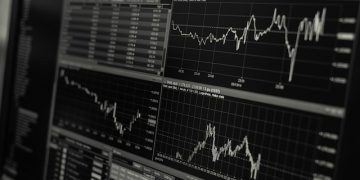Nokia (NYSE: NOK) , the Finnish telecommunications company, appears very undervalued currently. The business created exceptional Q3 2021 results, launched on Oct. 28. Moreover, NOK stock is bound to rise much higher based upon recent outcomes updates.
On Jan. 11, Nokia boosted its assistance in an upgrade on its 2021 efficiency and likewise increased its overview for 2022 rather substantially. This will certainly have the result of raising the business’s free capital (FCF) quote for 2022.
Consequently, I now approximate that NOK is worth at least 41% more than its price today, or $8.60 per share. As a matter of fact, there is constantly the opportunity that the firm can recover its dividend, as it as soon as assured it would consider.
Where Things Stand Now With Nokia.
Nokia’s Jan. 11 upgrade revealed that 2021 income will certainly be about 22.2 billion EUR. That exercises to regarding $25.4 billion for 2021.
Even presuming no growth next year, we can presume that this revenue rate will certainly be good enough as an estimate for 2022. This is additionally a method of being conservative in our forecasts.
Currently, furthermore, Nokia claimed in its Jan. 11 update that it anticipates an operating margin for the financial year 2022 to range between 11% to 13.5%. That is approximately 12.25%, and using it to the $25.4 billion in forecast sales leads to operating profits of $3.11 billion.
We can use this to estimate the cost-free capital (FCF) going forward. In the past, the business has stated the FCF would be 600 million EUR below its operating profits. That exercises to a reduction of $686.4 million from its $3.11 billion in forecast operating earnings.
Consequently, we can now approximate that 2022 FCF will be $2.423 billion. This might in fact be also low. For instance, in Q3 the company generated FCF of 700 million EUR, or regarding $801 million. On a run-rate basis that exercises to an annual price of $3.2 billion, or substantially more than my quote of $2.423 billion.
What NOK Stock Deserves.
The most effective means to value NOK stock is to make use of a 5% FCF yield metric. This means we take the projection FCF and also split it by 5% to acquire its target audience value.
Taking the $2.423 billion in projection free capital as well as separating it by 5% is mathematically equal increasing it by 20. 20 times $2.423 billion exercise to $48.46 billion, or around $48.5 billion.
At the end of trading on Jan. 12, Nokia had a market value of just $34.31 billion at a price of $6.09. That projection worth suggests that Nokia is worth 41.2% greater than today’s price ($ 48.5 billion/ $34.3 billion– 1).
This likewise means that NOK stock deserves $8.60 per share (1.412 x $6.09).
What to Do With NOK Stock.
It is possible that Nokia’s board will choose to pay a reward for the 2021 . This is what it claimed it would take into consideration in its March 18 news release:.
” After Q4 2021, the Board will analyze the possibility of proposing a reward circulation for the financial year 2021 based on the updated returns policy.”.
The upgraded dividend plan claimed that the business would “target repeating, stable and with time growing normal returns payments, taking into account the previous year’s revenues along with the business’s monetary setting as well as company overview.”.
Prior to this, it paid out variable dividends based on each quarter’s profits. However throughout all of 2020 as well as 2021, it did not yet pay any returns.
I think now that the business is generating cost-free cash flow, plus the truth that it has internet cash on its annual report, there is a sporting chance of a returns payment.
This will certainly also act as a stimulant to aid push NOK stock closer to its underlying value.
Early Indications That The Basics Are Still Strong For Nokia In 2022.
This week Nokia (NOK) revealed they would surpass Q4 guidance when they report complete year results early in February. Nokia also gave a quick and brief recap of their outlook for 2022 which included an 11% -13.5% operating margin. Administration claim this number is adjusted based on monitoring’s assumption for cost inflation and also recurring supply restraints.
The enhanced assistance for Q4 is mostly a result of venture fund investments which accounted for a 1.5% improvement in running margin compared to Q3. This is likely a one-off improvement originating from ‘various other revenue’, so this news is neither favorable nor negative.
Nokia.com.
Like I discussed in my last article on Nokia, it’s hard to recognize to what degree supply restraints are influencing sales. However based upon consensus revenue assistance of EUR23 billion for FY22, operating earnings could be anywhere between EUR2.53 – EUR3.1 billion this year.
Inflation and Prices.
Presently, in markets, we are seeing some weak point in richly valued tech, small caps and negative-yielding companies. This comes as markets expect additional liquidity tightening up as a result of higher rates of interest assumptions from investors. No matter which angle you look at it, prices require to increase (fast or slow-moving). 2022 may be a year of 4-6 price walks from the Fed with the ECB dragging, as this occurs capitalists will demand greater returns in order to compete with a higher 10-year treasury return.
So what does this mean for a firm like Nokia, fortunately Nokia is positioned well in its market as well as has the valuation to brush off moderate price walks – from a modelling perspective. Indicating even if prices enhance to 3-4% (unlikely this year) then the appraisal is still reasonable based on WACC calculations as well as the fact Nokia has a lengthy development runway as 5G costs continues. Nevertheless I agree that the Fed lags the curve and recessionary stress is developing – additionally China is maintaining an absolutely no Covid plan doing further damages to supply chains meaning a rising cost of living downturn is not around the corner.
Throughout the 1970s, assessments were really appealing (some may say) at extremely low multiples, nonetheless, this was due to the fact that inflation was climbing over the years hitting over 14% by 1980. After an economy policy change at the Federal Reserve (new chairman) rates of interest reached a peak of 20% prior to rates maintained. During this duration P/E multiples in equities needed to be low in order to have an eye-catching adequate return for financiers, therefore single-digit P/E multiples were extremely common as capitalists demanded double-digit go back to represent high rates/inflation. This partially taken place as the Fed focused on full work over secure prices. I discuss this as Nokia is currently valued beautifully, for that reason if rates enhance much faster than anticipated Nokia’s drawdown will certainly not be almost as huge compared to other fields.
As a matter of fact, value names can rally as the booming market shifts right into worth as well as strong totally free capital. Nokia is valued around a 7x EV/EBITDA (LTM), nonetheless FY21 EBITDA will certainly decrease a little when administration report complete year results as Q4 2020 was a lot more a successful quarter giving Nokia an LTM EBITDA of $3.83 billion whereas I anticipate EBITDA to be about $3.4 billion for FY21.
EV/EBITDA.
Developed by author.
Furthermore, Nokia is still improving, considering that 2016 Nokia’s EBITDA margin has expanded from 7.83% to 14.95% based upon the last 12 months. Pekka Lundmark has revealed early indications that he gets on track to transform the firm over the following few years. Return on spent resources (ROIC) is still anticipated to be in the high teenagers even more showing Nokia’s revenues possibility as well as positive evaluation.
What to Look Out for in 2022.
My assumption is that advice from analysts is still conventional, as well as I believe estimates would certainly need upward modifications to really reflect Nokia’s capacity. Earnings is guided to raise yet complimentary capital conversion is anticipated to reduce (based on consensus) how does that job exactly? Plainly, analysts are being conventional or there is a large difference amongst the analysts covering Nokia.
A Nokia DCF will need to be upgraded with new advice from administration in February with several situations for rates of interest (10yr yield = 3%, 4%, 5%). As for the 5G story, firms are extremely well capitalized meaning investing on 5G framework will likely not decrease in 2022 if the macro setting continues to be beneficial. This suggests improving supply issues, specifically delivery and port traffic jams, semiconductor manufacturing to overtake new automobile production and raised E&P in oil/gas.
Inevitably I think these supply problems are deeper than the Fed realizes as wage rising cost of living is also a vital chauffeur as to why supply concerns remain. Although I anticipate an enhancement in the majority of these supply side problems, I do not believe they will be fully solved by the end of 2022. Specifically, semiconductor makers require years of CapEx spending to boost ability. Sadly, until wage inflation plays its part completion of rising cost of living isn’t visible as well as the Fed threats inducing an economic downturn too early if prices take-off faster than we expect.
So I agree with Mohamed El-Erian that ‘transitory rising cost of living’ is the biggest policy mistake ever before from the Federal Reserve in current background. That being said 4-6 price walks in 2022 isn’t quite (FFR 1-1.5%), financial institutions will still be extremely successful in this environment. It’s only when we see a genuine pivot point from the Fed that wants to fight inflation head-on – ‘whatsoever required’ which translates to ‘we do not care if prices have to go to 6% and also trigger an 18-month economic crisis we have to maintain costs’.



